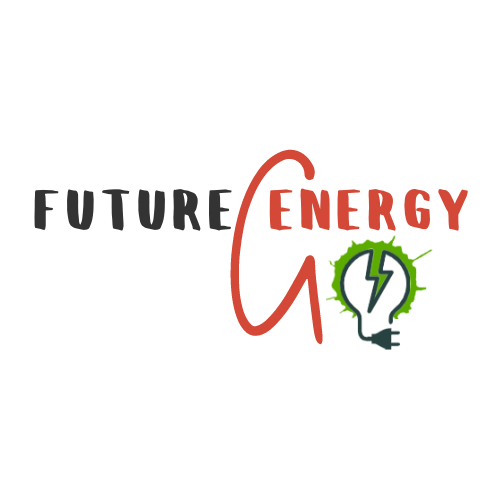Welcome to the PPA Glossary, your comprehensive online resource for understanding the intricate world of Power Purchase Agreements (PPAs). Explore a curated collection of key PPA terms and definitions, decoding the language of PPAs and making the renewable energy landscape more accessible for all.

What is a PPA?
A Power Purchase Agreement (PPA) is a legally binding contract between two parties, typically a renewable energy developer and an electricity consumer, that outlines the terms and conditions for the sale and purchase of electricity. In a PPA, the energy developer agrees to generate and deliver a specified quantity of electricity to the consumer over an agreed-upon period, usually 10 years or longer.
What is PPA Shape Risk?
Hourly generation profiles as produced by renewable energy sources (RES) have values different from the standard baseload electricity contract. The markdown/-up as compared to baseload prices are referred to as shape costs/risks.
What is PPA Imbalance Risk?
Renewable energy generation forecasts are never accurate. The fact that actual generation and forecast are at all times different results in imbalance positions and commercial risks.
The rules related to the potential liability of an asset’s exposure to power system costs differ from market to market. In general, the less accurate RES asset volume generation forecast is the day before, the higher the imbalance costs.
What is PPA Volume Risk?
Deviations of seasonal prognosis and realized generation lead to over-/under-hedged positions which result in a volume-driven market price exposure.
What is PPA Credit Risk?
The creditworthiness of PPA developers is also an important aspect to consider. One of the counterparties may fail to fulfil its obligation under a long-term electricity supply agreement.
What is PPA Accounting Risk?
The risk of a PPA contract being treated as a financial long-term lease or a derivative can lead to additional accounting challenges and impact a company’s balance sheet position.
What is PPA COD Date?
The PPA COD Date is when a power plant, like a wind farm or solar facility, officially starts producing electricity for commercial use. It’s the trigger for a Power Purchase Agreement, marking the beginning of the agreed power supply between the generator and the buyer.
Why is PPA an attractive energy supply solution for corporates?
Power Purchase Agreements (PPAs) can help buyers reduce their electricity cost basis, improve budget certainty over a longer period, and enable them to meet corporate sustainability objectives.
What are the different types of PPA?
There are several different types of Power Purchase Agreements (PPAs), each designed to accommodate specific energy needs:
On-Site PPA: Power generation on the consumer’s premises. Usually, 1 MW of less
Off-Site PPA: Remote power generation, with energy delivered to the grid. Usually, 5 MW or more
Off-site PPAs can usually be structured as:
Physical (Sleeved) PPA: An electricity supplier manages physical delivery of energy.
Financial (Virtual) PPA: A financial contract without physical power delivery.
What is the difference between PPA baseload price and “pay-as-produced”?
In an annual baseload PPA, a buyer agrees to buy a determined volume of energy for every hour over the year, while “pay-as-produced” PPA price structure gives the buyer intermittent renewable output from the asset.
What is Physical (Sleeved) PPA?
In a physical PPA, the corporate buyer takes title to the power generated by a renewable (seller), which is netted off the buyer’s total electricity demand. The power is physically delivered to the buyer from the seller – or via a retail service provider – depending on the market. Where applicable in the relevant market, Green Certificates are bundled with the renewable power produced, proving power consumed is renewable.
What is Financial (Virtual) PPA?
In a financial PPA (also referred to as a synthetic PPA) the corporate buyer procures electricity from renewable power (seller) at a negotiated rate – or strike price. The power generated is sold into the local grid at the wholesale price (not physically delivered to a Buyer). The buyer and seller settle the difference between the agreed strike price and local wholesale market price index, under a contract for difference (CFD) arrangement.
What is Private Wire PPA (onsite PPA)?
In a private wire PPA (also referred to as an onsite PPA or behind-the-meter PPA), renewable power is generated through onsite assets. This investment can either be made directly or a third party may be engaged to make the investment. The power generated by onsite assets is metered directly to the corporate buyer. This avoids consuming power from the grid. This approach provides the most direct link between the renewable source and power consumed but can be limited by site suitability and scale.
What is financial hedging?
Derivative Overlay (financial hedging). A derivative overlay is a contract that derives its value from the performance of an underlying entity. This underlying entity can be an asset, index, or interest rate and is often called the “underlying”. They can be held till expiry or can be traded.
What is a new asset PPA?
A new built or new asset PPA, also known as a greenfield PPA, is an agreement to purchase electricity from a renewable energy project that is still in the development or construction phase. The off-taker can support the development of new renewable energy projects, contributing to the growth of clean energy infrastructure, that allows him to claim additionality.
What is an existing asset PPA?
An existing project PPA, also known as a brownfield PPA, is an agreement to purchase electricity from an already operational renewable energy project. These PPAs are usually priced at the market prices. Also, the PPA contract duration can be shortened to 3-7 years vs 10 years+ for a new asset. In this case, however, suitability and operational risks must be considered.
What are PPA Head of Terms (HoT)?
PPA Heads of Terms (HoT) is a document that sets out the terms of a commercial transaction agreed in principle between parties in the course of negotiations of a Power Purchase Agreement. The main objective of HoT is to have written confirmation of the main terms agreed in principle as well as to outline a timeline and obligations between the parties. Once PPA Head of Terms is finalized, it can make a part of the Power Purchase Agreement (PPA). To access the PPA Head of Terms (HoT) negotiations playbook, the link is here.
What are PPA accounting implications under IFRS16?
Under IFRS16 accoutring rules, the party entering into a PPA must assess whether the contract is or contains a lease. A PPA contract contains a lease for the Buyer if it confirms the right of one of the below conditions:
1. To have a renewable asset explicitly identified in the PPA agreement;
2. To obtain substantially all the economic benefits deriving from the use of the asset;
3. To decide who has the right to direct how and for what purposes the asset is used throughout the period of use;
4. To decide how to operate the renewable asset or to design the asset by the Buyer.
What are PPA accounting implications under IFRS9?
Under IFRS9 accoutring rules (derivative accounting), a PPA contract is classified as a derivative (financial instrument) when it owns the following three features:
1. Its value varies as a consequence of the variation of an index;
2. It does not require an initial net investment;
3. It’s settled at a future date.
What is Levelized Cost of Electricity (LCOE)?
In simple terms, LCOE is the per-unit cost of electricity produced by a renewable project spread out evenly over its expected lifespan. LCOE costs depend on the below variable:
Initial Investment: This includes everything from building the infrastructure to acquiring the necessary technology.
Operating and Maintenance Costs: These are the day-to-day expenses required to keep your project running smoothly.
Expected Lifetime: How long will your solar panels or wind turbines keep spinning? This is a critical factor in LCOE.
Discount Rate: Think of this as the interest rate on your investment. It reflects the opportunity cost of tying up your money in this project rather than elsewhere.
What is renewable energy?
Renewable energy refers to energy sources that are replenished naturally, such as solar, wind, hydro, geothermal, and bioenergy.
What are the different types of renewable energy?
Solar Energy, Wind Energy, Hydroelectric Energy, Geothermal Energy, Bioenergy and Tidal Energy.
Why should a corporation switch to renewable energy?
Environmental benefits, Cost savings, Energy security, Compliance with regulations, Branding and Marketing.
How can a corporate switch to 100% renewable energy?
On-site generation, Power purchase agreements (PPAs), Energy Efficiency, Carbon Offset Projects, Carbon Credits, and Supporting Renewable Energy Policies.
What are the most affordable sources of renewable energy?
Hydroelectric, Onshore Wind, Solar PV and Biomass Energy.
What is a Fixed Price PPA?
A Fixed Price Power Purchase Agreement (PPA) is a contract between two parties, typically a renewable energy developer and a power buyer, in which they agree upon a fixed price for the sale and purchase of electricity over a specified period. Fixed Price PPAs are commonly used in the renewable energy industry to facilitate the financing and development of renewable energy projects.
What is an Indexed or Floating Price PPAs?
An Indexed or Floating Price Power Purchase Agreement (PPA) is like a flexible electricity contract. Instead of having a fixed price for power, the price can change over time based on factors like market conditions or a predefined index. This means the cost of electricity can go up or down as the market changes, which can be good if prices drop but can also be riskier if they rise. It’s a bit like a variable interest rate on a loan – your electricity price moves with the market.
What is a Hybrid Price PPA?
A Hybrid Price Power Purchase Agreement (PPA) is like a mix-and-match deal for electricity. In this type of agreement, you can get some of your electricity at a fixed price, which stays the same, and some at a floating or variable price that can change. It’s a way to balance cost predictability with the potential for savings or flexibility, kind of like having a part of your bill set in stone and another part that can move up and down based on different factors.
What is a Market Following PPA Price Structure with a Floor Plus Discount?
A Market Following Price Structure with a Floor Plus Discount is a way to buy electricity where your price is linked to how much electricity costs in the market. Your price can go up or down with the market, but there’s a “floor” price that is the lowest price you’ll pay. On top of that, you usually get a “discount” which means you pay a bit less than the market price. It’s like having a price safety net and getting a bonus discount when market prices are high.
What is a Bundled PPA Price Structure?
A Bundled PPA is a unique type of Power Purchase Agreement that combines Power Purchase Agreement with the physical supply service of electricity. Unlike traditional PPAs, where the focus is solely on renewable energy from a specific power plant, Bundled PPAs include both the procurement of electricity and its delivery service to your sites.
What is profile risk in PPA?
When someone talks about a PPA generation profile, they are interested in understanding what is expected energy generation potential of a specific renewable energy project. This information is important for businesses because it helps them plan the use of renewable electricity.

